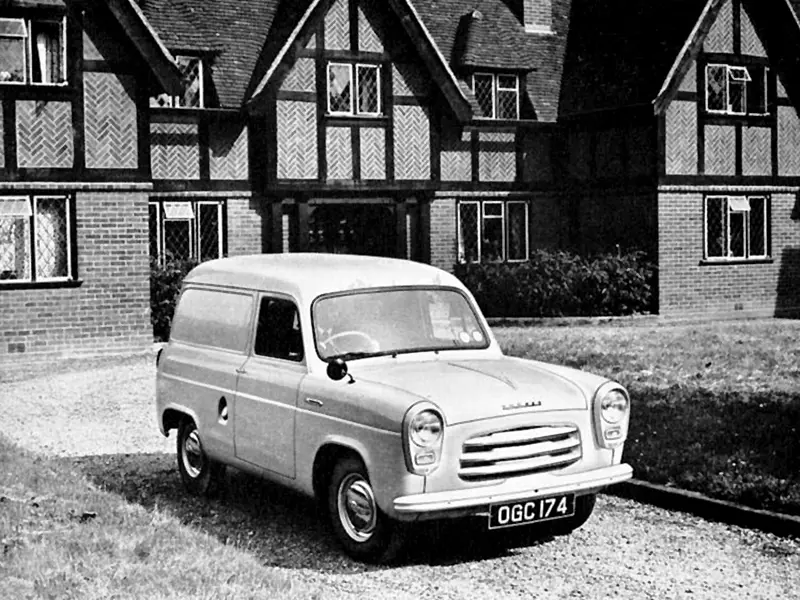DO YOU REMEMBER – THE THAMES 300E VAN?
23 December 2021
In 1954 Ford unveiled its latest van – one that was ‘Sparkling with Good Points’. The nation’s fleet buyers and shop owners were promised that the Thames 300E would be ‘a credit to your business’, Not to mention that with such a fine vehicle, ‘driving ceases to be work and becomes a pleasure’.

The latest Thames (Ford GB used this badge for its commercial vehicles until 1965) was essentially the Anglia 100E in light commercial form. As with its saloon counterpart, power was from the venerable 1,172cc side-valve engine combined with a three-speed gearbox. Compared with the outgoing E494C, the 300E did seem up to the minute – ‘Styled for strength, long life and good looks’. Here was the sort of van that might deliver bread, groceries or your new GEC television set.
The brochure further proclaimed the virtues of ‘Glide Ride’ suspension and the ‘large curved windscreen’, for at that time, the rival Morris “Quarter Ton” Minor Van still featured a split windshield. Ford also commissioned this splendid colour PR film, narrated by Eamonn Andrews and including a fascinating drive through the Dagenham works - https://www.youtube.com/watch?v=_oFgegePbfc
Andrews was a vastly experienced broadcaster, but even he had difficulty making the words ‘high performance’ sound convincing when applied to a 300E. His extolling the list of fittings presented him with another challenge - mainly because there were barely any. Instead, the driver could expect an ashtray, an adjustable seat, a sun visor and a single vacuum-powered windscreen wiper. There was also the luxury of ‘moisture proof flush fitting headlamps’ , ‘rear number plate illumination lamp‘ and ‘efficient roof drainage’.
However, no British light commercial of this era was precisely the last word in luxury. The Thames looked smart, the body was capacious, offering a 66 cubic foot load bay, and the engine was easy to maintain and simple to repair. For the ambitious trader, the list of extras included a passenger seat and visor, flashing indicators and a second wiper.
The first 300Es had a 5cwt payload, and 7cwt versions subsequently joined them, buyers having a choice of standard or De Luxe versions. Later models gained the mesh grille as found on the post-1957 100E saloons - In 1959, London Transport commissioned a batch of 13, one of which is now part of their Museum collection.
The 105E made its bow in that same year, but this did not result in the immediate demise of the 300E, and it would not be until 1961 that the Thames 307E replaced them. Fifty years later, any survivor is a fascinating example of a commercial vehicle of the pre-motorway era - a van from a time when ‘forward-hinged bonnet’ and ‘fully-opening windows’ were major sales features.
